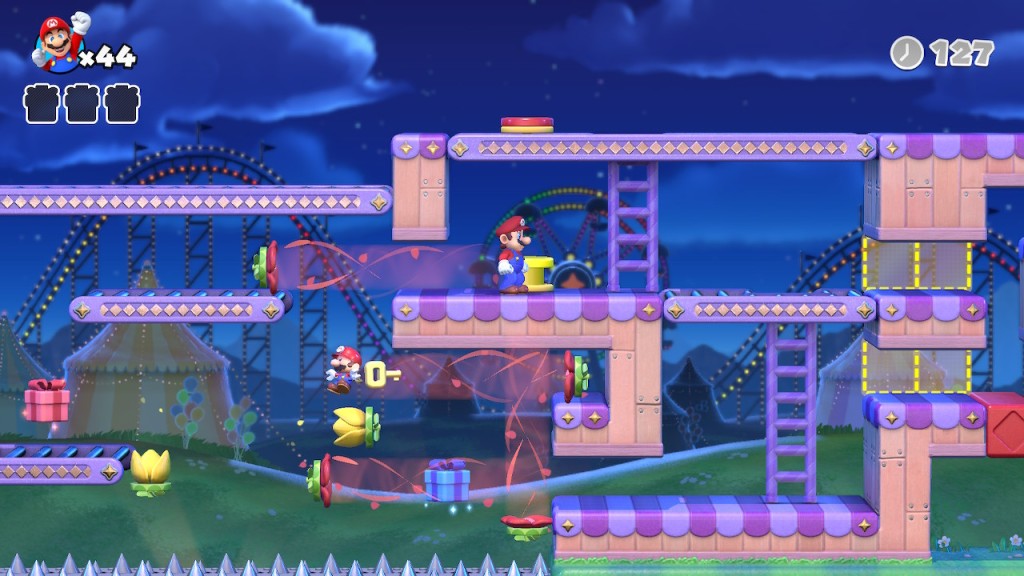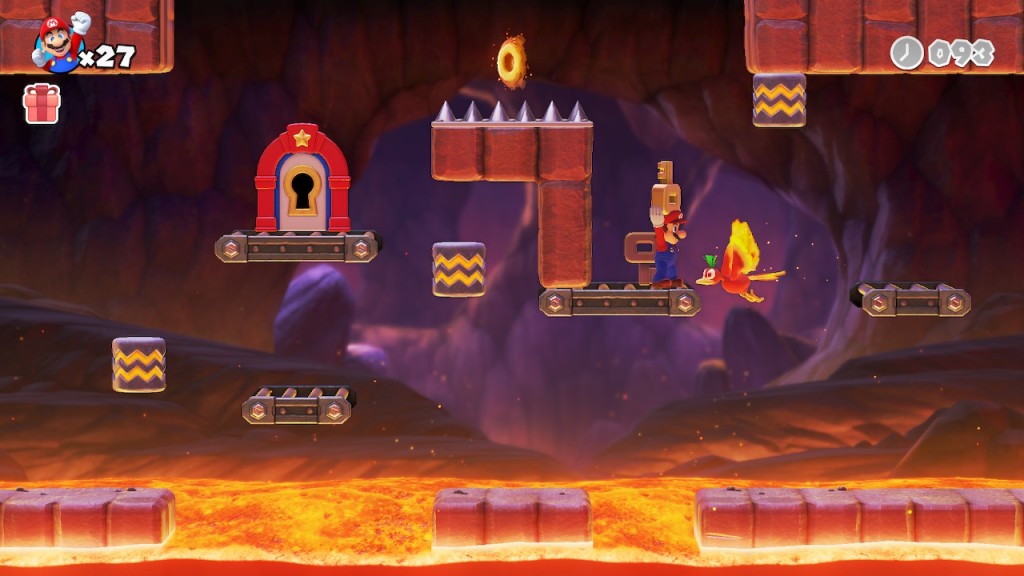Mario vs. Donkey Kong on Switch is a remake of the 2004 Game Boy Advance game of the same name, itself a spiritual sequel to the Game Boy version of Donkey Kong (unofficially referred to as “Donkey Kong GB” or “Donkey Kong ’94”) from ten years prior. Mario vs. Donkey Kong utilized gameplay inspired by its Game Boy predecessor (and, in turn, Mario and Donkey Kong’s arcade origins) that lead to a sub-series of its own. Though the Mario vs. Donkey Kong series would gain numerous entries over time, the focus of the games would shift away from its iconic titular characters and onto the “Mini-Mario” toy characters found in the series (later entries would even trade the ‘vs‘ in the title for ‘and,’ further deviating from its origins). So a remake of the 2004 game seems to be a nice reset for the series, and the upgrade to the Nintendo Switch means the game looks and sounds far better than ever. Though fans of the original who were hoping for something a little more may be a little disappointed to know that this remake doesn’t feature a whole lot that the original GBA release didn’t already boast.
The core structure of the game remains the same: Mario still travels across levels that are comprised of two single-screen sections that combine puzzles and platforming. The first half of a stage requires Mario to get a hold of a key and take it to the door to the second half, in which Mario completes the stage by collecting a Mini-Mario toy (Donkey Kong wants a toy for himself, but being a gorilla who doesn’t know how consumerism works, has stolen the entire batch of toys).
Mario is equipped with a different set of acrobatics than normal. In addition to his regular jump, Mario can do a handstand which can lead into a higher jump, with an even higher jump able to be performed after that. Mario’s jump doesn’t hurt enemies here but he can pick up foes when standing on top of them Super Mario Bros. 2-style. Stages will usually feature red, blue and yellow switches, which will operate different mechanics depending on the level, with only one switch being active at a time. Three similarly colored presents are scattered about each stage as well, and players who want one-hundred percent completion will want to grab them all.
The game now boasts eight worlds, as opposed to the original release’s six, with a new toy themed world 4 and ice themed world six joining the original building, jungle, volcano, haunted house, forest and city themed worlds. Each world consists of six standard levels and ends with a Mini-Mario level and a boss fight against DK himself. The Mini-Mario levels change up the structure, with Mario needing to guide the Mini-Marios collected from that world’s previous stages safely to a toybox. Depending on how many Mini-Marios make it to the toybox, Mario will have more health in the boss battle (up to six hit points).
Although the mechanics of the game harken back to the simplistic arcade days of Mario and Donkey Kong’s beginnings, the variety of ideas Nintendo came up with for the puzzles keeps things fresh and interesting throughout. And once all eight worlds have been completed, a second, more difficult campaign opens up in which each world has six new levels which once again mix things up (these stages ditch the two-part levels in favor of singular stages in which Mario has to solve the puzzles with the aid of a single Mini-Mario, who now holds the key to the levels’ exits). It’s a unique idea to fundamentally change how the game works midway through, but it ultimately pays off in giving the game more variety and an overall more fun experience. If only more games would take such a risk.

The game has, of course, never looked better. The vibrant, cartoony look of the characters and stages look beautiful on the Switch. And the soundtrack, re-recorded with real instruments, is a delight (the game even has the option to listen to its soundtrack right out of the gate, no unlocking required). The Switch may be getting on a bit in years, but you’d never know it based on Mario vs. Donkey Kong.
Aside from the audiovisual overhaul and two additional worlds, another welcome addition to the remake comes in the form of a two-player option, with a second player joining in as Toad. A new ‘casual’ option eliminates the time limit for stages, for those wanting to play the game more leisurely. Though these additions are all welcome (especially the new levels), they may not be enough for those who were hoping for a little more out of the game. Mario vs. Donkey Kong always had a lot of content for a Game Boy Advance title, but for a Nintendo Switch game, you can’t help but feel a few more bells and whistles could have been added.
It’s also worth pointing out that, despite featuring sixteen worlds between the game’s two campaigns, Mario vs. Donkey Kong is still over pretty quickly. While there’s nothing wrong with shorter games (in fact, they can feel like a blessing in this day and age when so many games feel padded to high heaven), the fact that the game doesn’t really get challenging until the last couple of worlds in the second campaign means you’ll breeze through the majority of it. Again, a short and easy game is no unforgiveable sin, but there’s something about this Switch upgrade of Mario vs. Donkey Kong that leaves you wanting more out of it. It’s a loving recreation of a cult favorite GBA title, and a fitting return to form for the Mario vs. Donkey Kong series, but it still doesn’t feel much bigger than the GBA original. Considering Mario vs. Donkey Kong is now a fully priced Switch release, this stings all the more.
Mario vs. Donkey Kong remains a competent and engaging puzzle-platformer that pays homage to the roots of Nintendo’s original hero and villain. It’s the kind of game that’s best enjoyed in small bursts. Though that very nature may have made it ideal for the GBA, it still serves as a fun ‘secondary’ Mario title on the Nintendo Switch.
7





